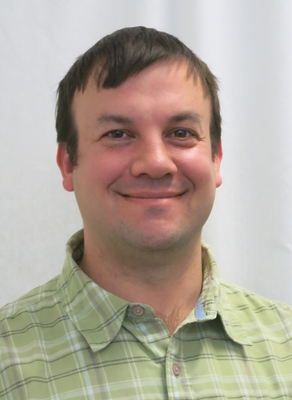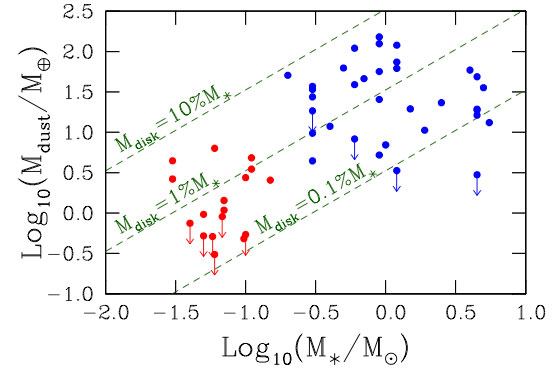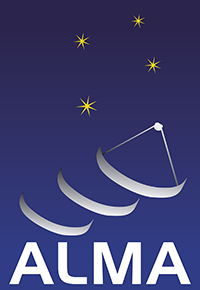NRAO eNews
Volume 9, Issue 9
17 October 2016
NRAO eNews
Volume 9, Issue 9 • 17 October 2016

Upcoming Events

Coexisting with Radio Frequency Interference
Oct 17 - 20, 2016 | Socorro, NM

2016 Jansky Lecture
Oct 27, 2016 | Charlottesville, VA

2016 Jansky Lecture
Nov 4, 2016 | Socorro, NM

NRAO Town Hall at the Jan 2017 AAS Meeting
Jan 6, 2017 | Grapevine, TX

ALMA Band 1 Science Workshop
Jan 16 - 18, 2017 | Taipei, Taiwan
NRAO Assistant Director of Science Support and Research

I am pleased to announce that Lewis Ball has joined NRAO as the Assistant Director of Science Support and Research (AD – SSR). Some of you know Lewis from his period as the ALMA Deputy Director between 2010 and 2013, during which time he was also an NRAO employee. Lewis oversaw the exciting transition of ALMA from construction to operations, and the delivery of ALMA Early Science through Cycles 0 and 1.
Between 2013 and 2016, Lewis was the Director of CSIRO Astronomy and Space Science (CASS) in Australia. CASS is the Australian analog of NRAO, delivering radio astronomy facilities to Australian and overseas astronomers, including the Parkes Radio Telescope, the Australia Telescope Compact Array, and the new Australian SKA Pathfinder (ASKAP). The issues being faced by CASS, NRAO, and radio observatories around the world are quite similar, and Lewis' recent experience will be highly relevant.
Lewis arrived in Charlottesville and started work at NRAO on Monday, 10 October. His office is room 342 at Edgemont Road, and his e-mail is lball AT nrao.edu. Please join me in welcoming Lewis back to NRAO!
I would also like to Tim Bastian for his efforts in the Assistant Director of Science Support and Research role over the past several years. Tim's efforts leading SSR, including managing the highly visible and complex Telescope Time Allocation process for all NRAO domestic instruments, have been outstanding. Tim is changing gears, returning to his science and spearheading development of Jansky VLA and ALMA solar observing capabilities, both of which show great promise.
Eric Murphy Appointed ngVLA Project Scientist

I am pleased to announce the appointment of Eric Murphy to the position of next generation Very Large Array (ngVLA) Project Scientist. In this role, Eric will be responsible for the development of the ngVLA science case and its science requirements. He will serve as the primary liaison between the NRAO and the astronomy community to ensure inclusive engagement in the development of the ngVLA science case and design. He will also work with the ngVLA technical teams in translating science requirements into high level technical requirements.
Eric is transferring to the ngVLA from the NRAO North American ALMA Science Center (NAASC), where he was a member of the Data Services and Archive Team. He has been an active participant in the astronomy community as a co-chair of the Governing Council for the VLA Sky Survey, chair of the ngVLA Galaxy Ecosystems Science Working Group (SWG), and a core member of the SKA Extragalactic Continuum SWG. Prior to joining NRAO, Eric was a research scientist at Caltech and a postdoctoral fellow at Carnegie Observatories and the Spitzer Science Center. He received his PhD in Astronomy from Yale University. His research interests include galaxy formation and evolution, star formation, cosmic ray propagation, and magnetic fields. Eric’s office is located at the NRAO facilities on Edgemont Road in Charlottesville.
Please join me in welcoming Eric to the ngVLA.
ngVLA Science Advisory Council

NRAO is pleased to announce the membership of the next generation Very Large Array (ngVLA) Science Advisory Council (SAC). Membership was determined through open nominations and a selection process involving NRAO staff and the community. The ngVLA SAC is an external committee that will act as the interface between the scientific community and the ngVLA Project Office, providing feedback and guidance as we move towards a complete design for a next-generation centimeter-to-millimeter-wave interferometer centered around the VLA site on the Plains of San Agustin in New Mexico.
A similar call will be held for the ngVLA Technical Advisory Council (TAC) in the coming months. The ngVLA SAC and TAC are the cornerstones of a program to fully engage the astronomical, computing, and radio engineering communities to develop the ngVLA project for submission to the Astro2020 decadal review.
| Inaugural ngVLA Science Advisory Council | |
|---|---|
| Alberto Bolatto | University of Maryland |
| Shami Chatterjee | Cornell University |
| Laura Chomiuk | Michigan State University |
| Mark Dickinson | NOAO |
| James Di Francesco | NRC-Victoria |
| Gregg Hallinan | Caltech |
| Andrea Isella | Rice University |
| Kotaro Kohno | University of Tokyo |
| Shri Kulkarni | Caltech |
| Cornelia Lang | University of Iowa |
| Joseph Lazio | JPL |
| Laurent Loinard | UNAM |
| Brenda Matthews | NRC-Victoria |
| Rachel Osten | STScI |
| Fabian Walter | Max-Planck-Institut für Astronomie |
| David Wilner | Harvard-Smithsonian CfA |
CASA 4.7.0 Release

We are pleased to announce the release of CASA 4.7.0.
The Common Astronomy Software Applications (CASA) package is being developed by NRAO, the European Southern Observatory (ESO), the National Astronomical Observatory of Japan (NAOJ), and Academia Sinica Institute of Astronomy and Astrophysics (ASIAA). CASA supports the offline reduction and analysis of Atacama Large Millimeter/submillimeter Array (ALMA) and Jansky Very Large Array (VLA) data. CASA is fully scriptable. Full support is provided for ALMA and VLA, but almost any data that can be written in uvfits format can be imported and reduced in CASA.
CASA 4.7.0 is available from the Obtaining CASA webpage.
Supported Operating Systems for CASA 4.7.0 are:
Additionally, Amazon Machine Images (AMI) containing CASA 4.7.0 are being prepared and will be available on Amazon Web Services. Please consult the NRAO documentation of this capability for more information.
The CASA 4.7.0 release includes the pipeline for ALMA Cycle 4 and an updated VLA pipeline that is currently being validated. New features in CASA 4.7.0 include:
- tclean is a partly-commissioned imaging task. Commissioned parts include mfs with nterms =1&2 for the standard and mosaic gridders, and spectral line mode cube with the hogbom deconvolver in the LSRK frame. We also tested the common option of restoringbeam and as well as multi-scale clean. Additional modes testing is underway, including parallel computing support.
- Pre-averaging in flagdata.
- New plotms options to improve plotting of calibration tables, including SNR, TECIM, spgain and Tsys plotting; selection by polarization.
- New task importnro to convert Nebeyama NOSTAR data to ASDM.
- New task specflux to derive parameters of spatially extended spectral lines.
All the new features in the CASA 4.7.0 release are described in the CASA release notes.
We encourage you to subscribe to the following mailman lists:
- Casa-announce for announcement of new releases, workshops, etc.
- Casa-users for critical bugs and code updates.
- Casa-news for the semi-annual CASA Newsletter.
If you have any questions, please consult the NRAO helpdesk, the ALMA Helpdesk or the CASA discussion forum.
Possible Disk Truncation in Ophiuchus Brown Dwarfs

Fig. 1: A plot of dust mass vs. central object mass for the sample of brown dwarfs and T Tauri stars in Ophiuchus. The dashed lines show the disk dust mass as a percentage of central object mass. Note that the dust masses for the brown dwarfs are low (< 10 earth masses), and that there are very few brown dwarfs with disk dust masses greater than 1% of the central object mass.
[click to enlarge]
The sensitivity, resolution, and wavelength coverage of ALMA makes it an ideal tool for studying the properties of the cold outer disks of young stars and low mass objects. Such observations can aid us in understanding the formation of their central objects and their likelihood of ultimately hosting planets.
In a recent Astronomy & Astrophysics paper, L. Testi (ESO) and his collaborators made use of ALMA Band 7 to observe an unbiased sample of spectroscopically confirmed Ophiuchus brown dwarfs with infrared excesses. Eleven of the 17 brown dwarfs are detected at 890 microns, with derived dust masses in the range of 0.5 - 6 Earth masses.
With such low masses, it is unlikely that planets can form around these low mass objects. Further, the authors measure the profile of the two brightest disks in their sample and show both to have a sharp disk edge at ~ 20-30 AU; the remainder of the dwarfs have disk sizes < 20 AU. The small measured disk sizes relative to both brown dwarfs in Taurus and to the more massive Ophiuchus T Tauri stars, combined with the apparent deficit in the disk-to-central object mass ratios in these brown dwarfs relative to T Tauri stars, are suggestive of environmental effects within Ophiuchus which truncate the disks of their brown dwarfs.
ALMA Call for Development Project Proposals
The North American ALMA Development Program funds instrumental upgrades to sustain ALMA science. A Call for Proposals for Development Projects was released 10 October 2016. A detailed description of the process and requirements can be reviewed on the Call for Proposals for Development Projects website. The deadline for proposals will be at the end of January 2017. If you are planning or even considering proposing in response to this Call, please file a Notice of Intent as soon as practical before the deadline of 28 October.
The Cycle 5 ALMA Development Program is expected to include an integrated, multi-year award pool for North American development studies and projects that may total up to $14M USD.
ALMA Band 1 Science Workshop - First Announcement

The ALMA Band 1 Science Workshop will take place at the Academia Sinica Institute of Astronomy and Astrophysics (ASIAA) in Taipei, Taiwan from 16 – 18 January 2017. The Workshop will feature a few invited talks on the main scientific goals of ALMA Band 1, in addition to contributed talks, and poster sessions.
Additional information about the workshop and registration is available at the Workshop website.
The new ALMA Band 1 receiver is a development project led by East Asia as a collaboration of the ASIAA, the National Astronomical Observatory of Japan (NAOJ), NRAO, and the Universidad de Chile that will provide access to the 35-51 GHz frequency window at high angular resolution and sensitivity from the southern hemisphere. This ALMA capability will complement the pioneering work at those frequencies done in the northern hemisphere with the Jansky Very Large Array (VLA) and the Green Bank Telescope.
ALMA Band 1 science will greatly increase the volume of the observable Universe, and the range of observable frequencies and energies accessible. The two main scientific goals of the ALMA Band 1 project are the study of the evolution of millimeter to centimeter sized grains in protoplanetary disks, and the detection of molecular line emission from high-redshift galaxies, tracing molecular emission from redshifts z ~ 1 – 10. The delivery of Band 1 receivers to all ALMA antennas is planned for completion in December 2019. This ALMA Band 1 Science workshop will provide the first opportunity to showcase the exciting new science that the Jansky VLA has delivered and ALMA will complement, and to start preparing for the first observing proposals in the lowest ALMA frequency band.
ALMA Cycle 4 Observing Underway

ALMA Cycle 3 concluded on 30 September 2016, and was immediately followed by the beginning of Cycle 4. New capabilities announced in March 2016 are now operational on the array, enabling astronomers to address the exciting science targeted by proposals submitted in April 2016. New software versions for array operations, for the calibration pipeline, and for the new imaging pipeline will speed Cycle 4 data to investigators worldwide. A detailed report on the outcome of the ALMA Cycle 4 Proposal Review Process has been published that details the proposal review process, proposal statistics and regional distributions, as well as the proposal distribution across science categories and receiver bands.
Half a Decade of ALMA Science Conference

Brett McGuire
ALMA Director Pierre Cox presented an overview of ALMA science to open the conference.
[click to enlarge]

Brett McGuire
Half a Decade of ALMA conference attendees.
[click to enlarge]
The Half Decade of ALMA: Cosmic Dawns Transformed conference was held 20-23 September in Indian Wells, California, USA; there were 215 attendees. The 68 invited and contributed talks were compelling and are available at the conference Open Framework link. Abstract books for the talks and the 123 posters posters are available at the conference website. Together these constitute the published output of the conference.
ALMA Director Pierre Cox noted: “It was a scientific feast with numerous extraordinary and transformational results presented in roughly all of the major topics of today's astronomy. Clearly ALMA is delivering today what those who made ALMA a reality, many of whom were present in the audience, had dreamed about two or three decades ago, providing results that are both stunning and surprising, going sometimes beyond what was anticipated. Throughout the conference, examples were provided from the Solar System to star-forming regions, from disks forming planets to regions of high chemical complexity, from nearby galaxies to the farthest known galaxies in the universe. Due to the efforts [of the Local Organizing Committee], the organization of the conference was impeccable and flawless.”
We add our thanks to those members of the Science Organizing Committee and the ALMA North American Science Advisory Committee who helped formulate the conference plan.
The meeting was followed by a short workshop on plans proposed by East Asia for a new total power correlator, and a stimulating symposium for postdoctoral researchers. Details of the postdoctoral symposium are also available at the conference website.
Recent Media Releases
|
NRAO's New Cooperative Agreement |
|
|
Stellar 'Cocoon' Seen for First Time Outside Our Galaxy |
|
|
Image Release: Spiral Arms Embrace Young Star |
|
|
ALMA Explores the Hubble Ultra Deep Field |
|
|
Galactic Fireworks Illuminate Monster Hydrogen Blob |
Career Opportunities
Jansky Fellowship: The primary purpose of the Jansky Fellowship Program is to provide an opportunity for early career scientists to establish themselves as independent researchers so that they may more effectively compete for permanent positions. Jansky Fellows are encouraged to develop research collaborations both within the NRAO research community and with researchers in the astronomical community-at-large. To help foster research between Jansky Fellows and the NRAO scientific community, the NRAO Postdoctoral Symposium is held annually to ensure close contact among all Observatory Fellows and the NRAO. The Fellowship will be assigned to the following NRAO sites: Socorro, New Mexico or Charlottesville, Virginia. In compelling cases, non-resident Jansky Fellowships may be offered for appointments that are hosted at a university within the United States. Non-resident Jansky Fellows are strongly encouraged to make frequent and/or long term visits to NRAO sites. Split Fellowships with time spent at NRAO and a university within the U.S. are permitted.
Assistant/Associate Scientist (open rank): The NRAO is actively seeking Assistant/Associate Scientist(s) to work for the North American ALMA Regional Center (NA ARC), the science operations division of North American ALMA. The NA ARC supports the North American astronomical community in using ALMA and provides scientific support for operations of the Joint ALMA Observatory (JAO) in Chile, in collaboration with the ALMA international partners. The NRAO is seeking several qualified candidates to work with and lead teams within the NA ARC. Currently, there are four teams within the NA ARC: Telescope Interface and Diagnostics, ALMA Software Support & Testing, Science Community Interface, and Science Data Services and Archive. The staff scientists recruited for these positions are expected to facilitate and enable cutting-edge science by community members and to work to enhance ALMA observing capabilities. Appointments will be in residence in Charlottesville, Virginia, or potentially other NRAO locations.
For additional information on these openings and other NRAO career opportunities, please visit the NRAO – Career Opportunities web pages.
From the Archives
Ellen Bouton

[click to enlarge]
About this month's photograph: This photograph from the June 1976 Very Large Array (VLA) Monthly Progress Report shows four VLA antennas and the southwest arm. On 18 October 1976, this four-element array obtained its first interferometric fringes. Over the previous few months, various tests had been conducted at 6 cm, 2 cm, and 1.3 cm, and in November 1976, along with continued testing, two observing sessions were conducted:
For the test and the observing sessions in November 1976, antennas 1 – 4 were in use at stations DW2, DW3, CW7, and CW9. By the first quarter of 1977, array observations were averaging one 40-hour and one 88-hour run every two weeks, with a 5.2 km baseline and a maximum of six-elements in the array.
Jim Condon notes the following about the 1-3 November 1976 observations: "The actual observing was pretty primitive back then. Four antennas are only one more than the three in the Green Bank interferometer. We observed sources so compact that the VLA could not resolve them, so we weren't even trying to do imaging. The VLA just collected the total radio emission of the sources at three frequencies so that we could measure their continuum spectral indices. A good single dish could have done the same job. Nobody expected a spectacular result; more a test that the VLA was working at all."
From the Archives is an ongoing series illustrating NRAO and U.S. radio astronomy history via images selected from our collections of individuals' and institutional papers. If readers have images they believe would be of interest to the Archives, please contact Ellen Bouton.

